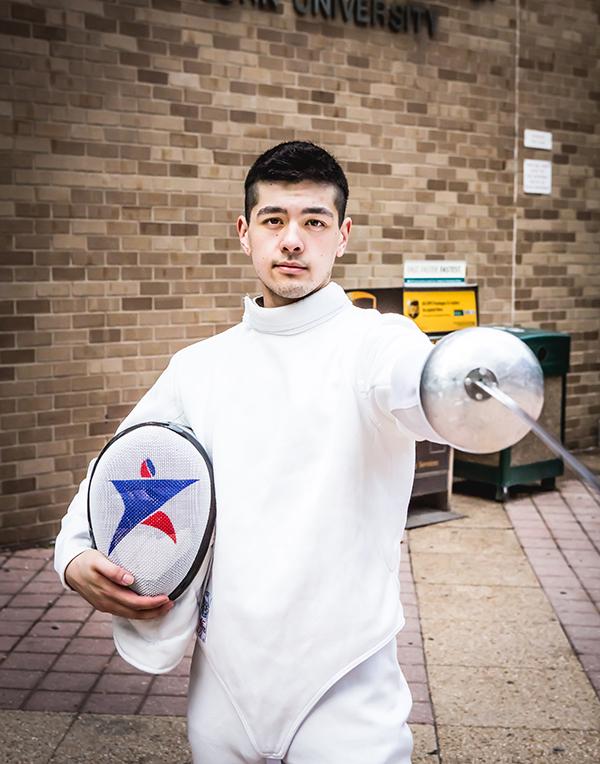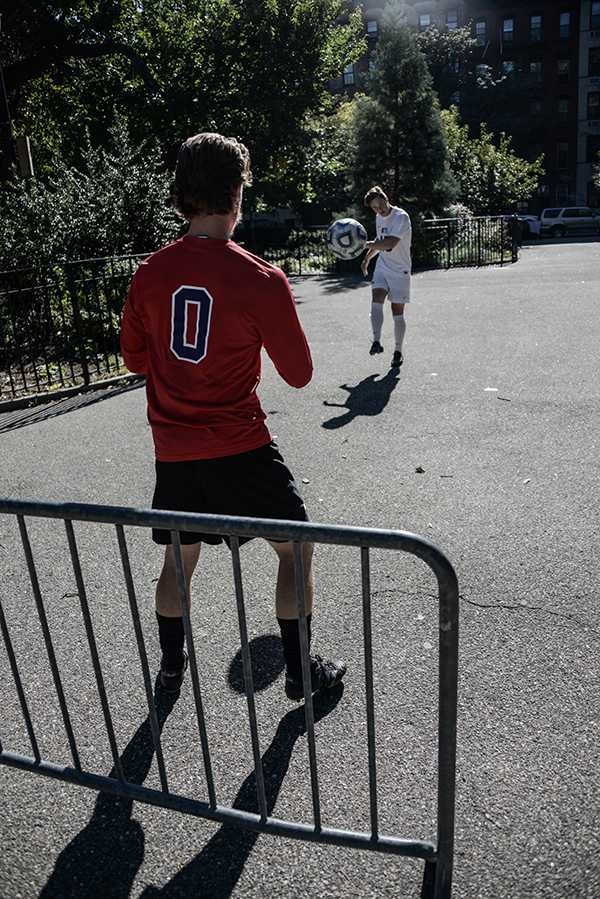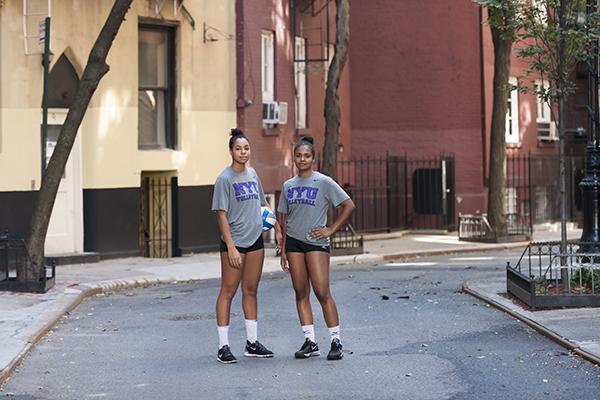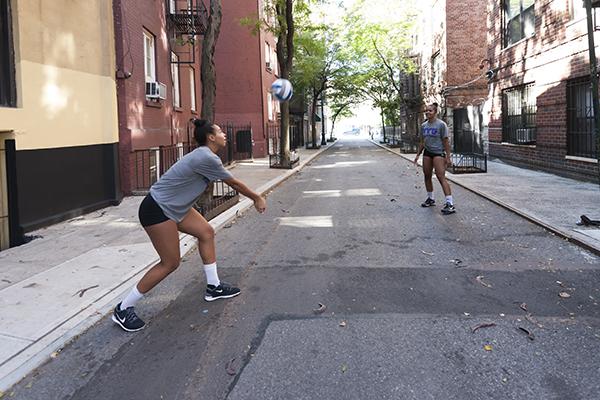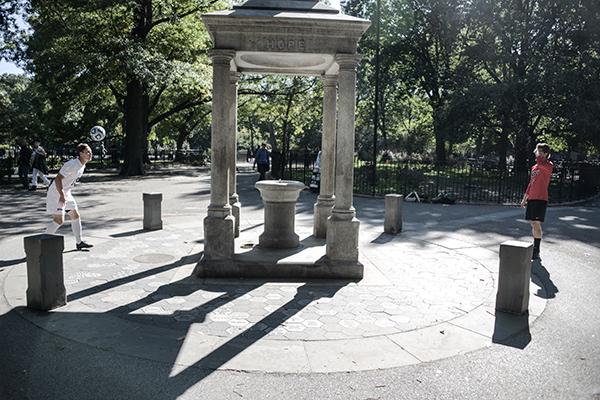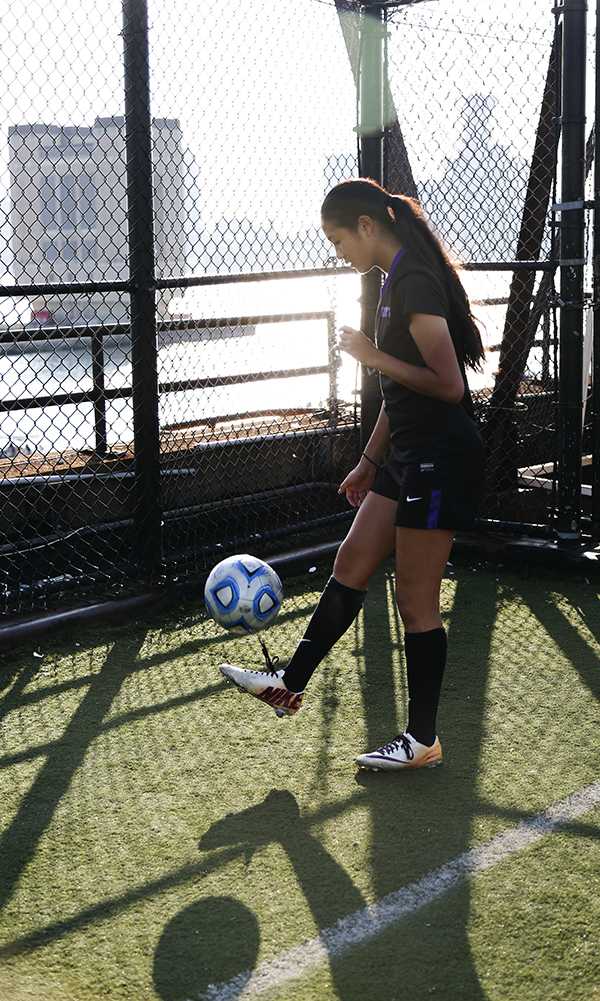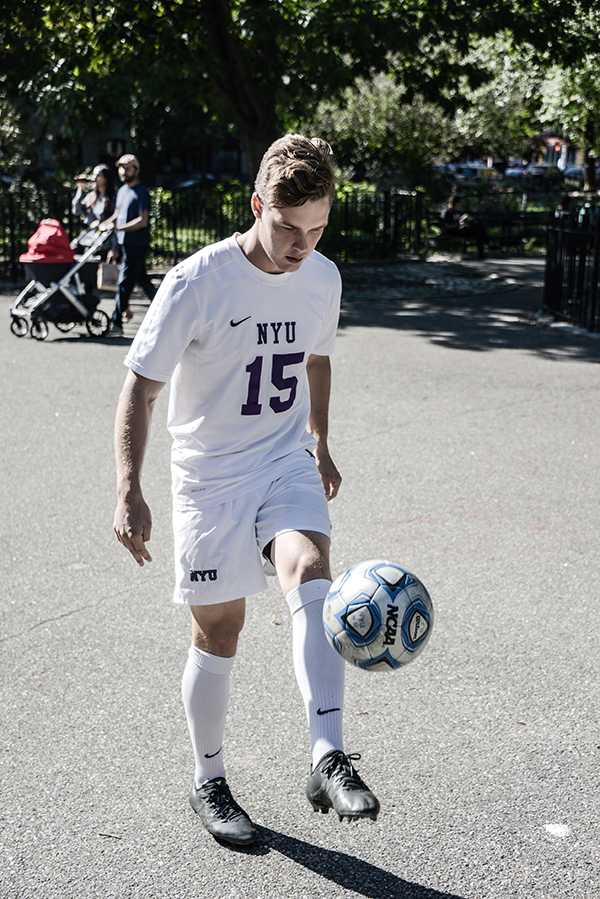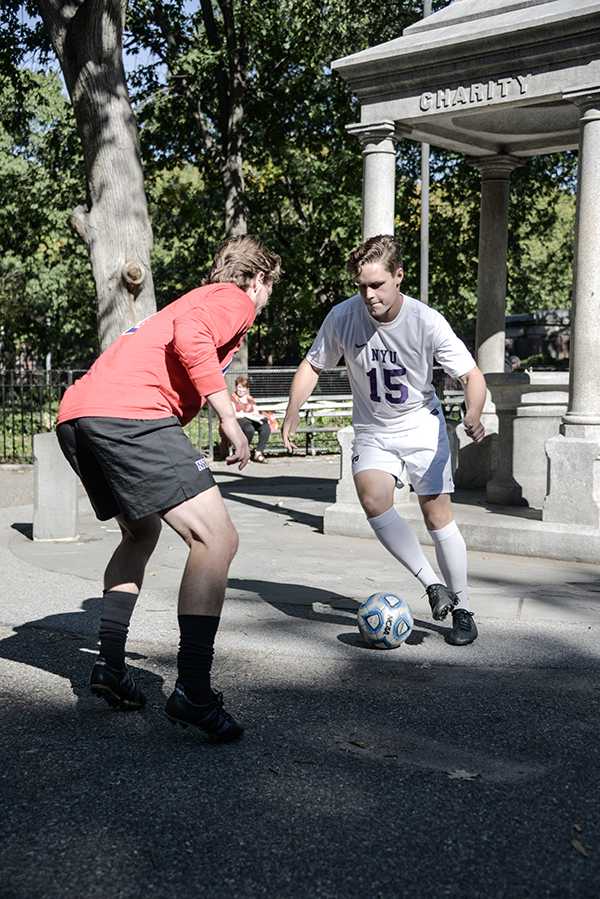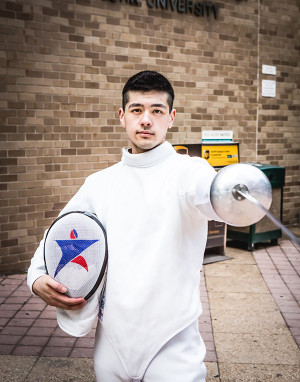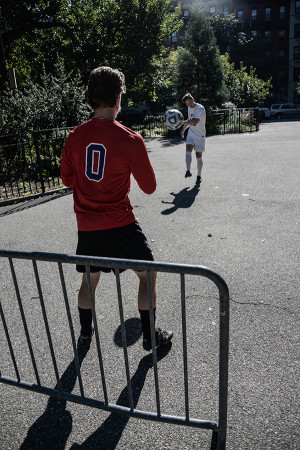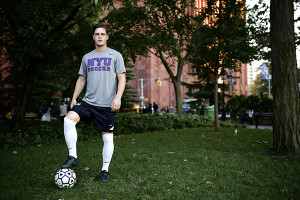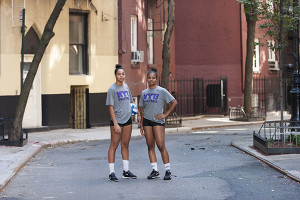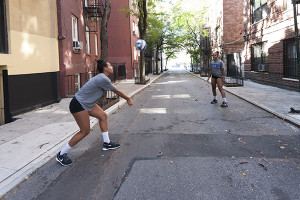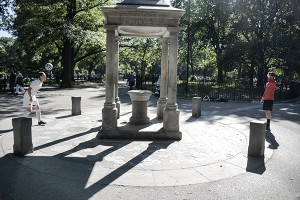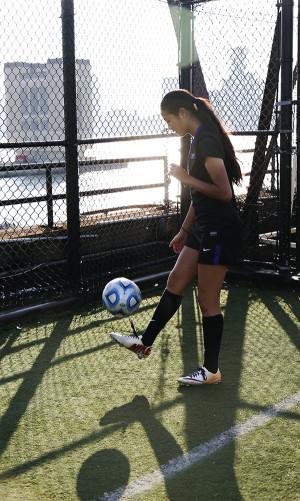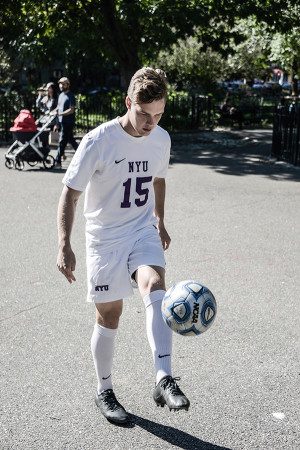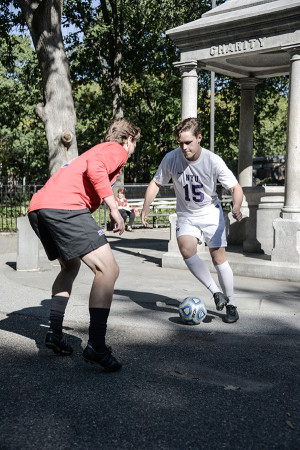NYU’s forgotten culture
October 13, 2015
Now, in my second semester of being sports editor at WSN, I’ve experienced my fair share of NYU sports. My first Violet sports outing was covering the men’s soccer match against the United States Merchant Marine Academy. It was a cold September night, and the team battled through a physical contest for an exciting 2-1 victory that left them with 7-1 record on the season and in good position to compete for a league title. I had arrived early, expecting the seats to fill before kickoff. But the stands were a ghost town. On the field you could hear a pin drop.
NYU has 24,985 students. It’s ranked 32nd in US News’ annual National College Rankings. It has 13 campuses worldwide. It is at the forefront of one of the most diverse, high achieving cities in the world. How, then, could a school as major league as NYU have such a minor league sports culture?
Way back when, as unbelievable as it may sound, NYU was a national competitor in the two most mainstream college sports at the Division I level: basketball and football. The football team used to play in the prestigious Polo Grounds and Yankee Stadium. The basketball team was a perennial contender, finishing as national runners-up in 1945 and losing in the Final Four in 1960. This all came to an end in 1971 with a wholesale shutdown of NYU athletics. Since then, NYU has been a Division III school.
A general campus-wide lack of interest has undermined the fact that nearly every Violet team remains competitive at the Division III level. There is an overriding sentiment among student-athletes and fans that unlike other schools, the culture that craves Division I sports has long been dead and will not come back to life any time soon.
The question remains why NYU’s more competitive teams, which include women’s basketball and soccer, cannot garner even high school level support while participating in NCAA athletics. In a school as bustling and cramped as the downtown Manhattan campus of NYU, it comes down to two main factors: location of games and the overwhelming division of student interest among other aspects of college life.
NYU Assistant Athletic Director for Sports Information Jeffrey Bernstein said these two factors play off one another and make it difficult for sports to keep the attention of NYU students.
“There is definitely more of a challenge in keeping our students involved as spectators when comparing our ‘campus’ to those of other universities,” Bernstein said. “We cannot offer Friday night or Saturday afternoon football games in 100,000-seat stadiums, which are usually used as campus-wide rallying points. Rural campuses also have a lot less entertainment options than does an NYU student who is in the middle of New York City.”
Location, at least in the near future, does not seem a solvable problem. As of now, the only spectator sports that play within walking distance of Washington Square Park are volleyball, basketball and hockey. Soccer and baseball, each about an hour commute by subway, present the most difficult challenges for student support among all athletic teams at NYU.
Men’s basketball captain Max Ralby recognized that playing in Coles has been beneficial to the attendance of his team’s games, and admitted that when Coles is closed and the basketball team is moved to Baruch College, it will be a much larger challenge to drum up a home crowd vibe.
“It’s not really that enticing for students to go all the way to MCU park for baseball or all the way uptown for soccer,” Ralby said. “We live in New York City and these students have so much on their plates, whether it’s classes, internships. So it’s tough for them to go make that trip and take three or four hours out of their day.”
Among athletes, there is disagreement about whether students would have interest in attending even if a convenient location made their options more readily available. A pair of junior soccer stars, captain Petter Aasa and goalkeeper Lucas Doucette, said given the amount of international students enrolled here, soccer could be one of the most widely supported sports at NYU if their games were closer. The team, who used to play at Pier 40 on the West side, now plays at Gaelic Park, a one-hour ride away on the 1 train to the Bronx.
“It doesn’t matter the program they’re studying, whether it’s business or arts,” Aasa said. “A lot of people have in common that they would want to get the sense of school spirit into the athletic department.”
As for athletics as a whole, Doucette was a little more skeptical about the possibility of transforming the entire sports culture here to mirror a state school environment.
“I think the type of student that comes to NYU is the anti-jock,” Doucette said. “Obviously there’s always going to be a culture for people who love sports wherever you go, but I think that’s very much a minority here.”
Through no fault of its own, NYU has created so many opportunities that there’s just no need for students to go out of their way to get to an athletic event. With so many other options available to them, there’s hardly any student who would find themselves at a Violets game out of boredom. This same idea is exactly what makes NYU so unique and attractive to prospective students.
“If you’re interested in painting, then Thursday night there’ll be this huge free painting thing,” sophomore diver Austin Campitelli said. “If someone is actually interested in something else then they’re going to go to that instead. I think that’s why NYU is unique in itself. As an athlete you have to know that before going in.”
With all that in mind though, it’s still conceivable to think that a school with NYU’s resources could compete in Division I conferences similar to the Patriot League or the MAAC conference while maintaining its academic prowess. However, considering the financial implications of a reclassification to Division I, it’s just not a pressing concern for a school that is already enjoying the environment they find themselves in the UAA — one that includes an overt focus on academics coupled with a realistic outlook on the future of athletes’ careers after sports. NYU Athletic Director Christopher Bledsoe sees no better option than the current situation the Violets are in.
“NYU is not planning to reclassify from NCAA Division III to NCAA Division I,” Bledsoe said. “NYU is very happy with our affiliation with the University Athletic Association, an excellent group of Universities that mirror our commitment to academics and athletics. We believe it is the best place for our student-athletes and our University. What Division I conference could offer us such an affiliation?”
However, men’s hockey Head Coach Chris Cosentino, who is a strong proponent of impacting the community through athletics, believes NYU could be a better university if it had the resources and space to foster a sports culture.
“In my honest opinion the only thing that really separates NYU from Ivy League schools is the athletics,” Cosentino said. “I think Ivy League schools give their students more opportunities in athletics. It’s no surprise that so many companies now love hiring athletes, because they know how to work as a team and overcome adversity.”
In the short term, the question of how to foster a tighter knit athletic community at NYU seems to be far from answered. Between Violet Nation Giveaway Days, posters and emails, the athletic department is already doing as much as they can. It seems that sports junkies at NYU will have to overhaul the school’s culture from the bottom up, starting with attending more events and seeing the ways in which Violet athletes work within the Division III mold to make an impact not only on the field, but as growing members of the unique and individual NYU community.
Until there is an overwhelming majority of students who demand a larger focus on athletics — which may very well never happen — a school that was once an athletic titan within New York City will continue to sport, at best, only a tiny niche community of athletes and fans.
A version of this article appeared in the Oct. 13 print edition. Email Bobby Wagner at [email protected].

